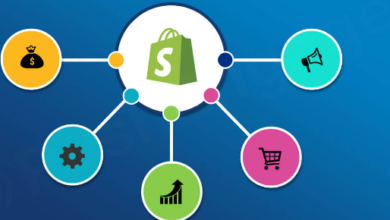Driving Sustainability through Business Spend Management: The Power of Sustainable Procurement Practices

In the ever-evolving landscape of business, the integration of sustainable practices has become paramount, not only for ethical reasons but also for financial prudence. One area where sustainability has a profound impact is in the realm of procurement. Sustainable procurement practices, when seamlessly integrated into Business Spend Management, can deliver a range of benefits, from cost savings and risk mitigation to enhanced corporate social responsibility. In this comprehensive article, we will explore the significance of sustainable procurement practices, offering insights, strategies, and real-world examples to guide organizations toward a path of financial and environmental sustainability.
Understanding Sustainable Procurement Practices
Sustainable procurement practices encompass a range of spend management strategies and guidelines aimed at sourcing products and services in a manner that reduces negative environmental and social impacts. These practices include:
1. Supplier Evaluation: Assessing potential suppliers not only based on cost and quality but also on their environmental and social responsibility. This process ensures that suppliers align with an organization’s sustainability goals.
2. Product Life-Cycle Assessment: Analyzing the entire life cycle of products, from raw materials and production to distribution and disposal, to identify areas for environmental improvement.
3. Resource Efficiency: Implementing spend management strategies that reduce resource consumption, such as energy and water, during production and use of products.
4. Social Responsibility: Ensuring that suppliers adhere to fair labor practices, treat their workers ethically, and maintain safe working conditions.
The Importance of Sustainable Procurement Practices
The adoption of sustainable procurement practices within spend management strategies is critical for several reasons:
1. Cost Reduction: By optimizing resource usage and reducing waste, organizations can significantly lower their operational costs. Sustainable practices often lead to more efficient processes and fewer resources wasted.
2. Risk Mitigation: Embracing sustainability helps organizations to reduce exposure to regulatory and operational risks. It ensures that the supply chain is resilient in the face of changing environmental regulations and market demands.
3. Corporate Social Responsibility (CSR): Sustainable procurement practices align with CSR objectives. They demonstrate an organization’s commitment to social and environmental well-being, which is essential for reputation management.
4. Competitive Advantage: Organizations that integrate sustainability into their procurement practices gain a competitive edge. They become more attractive to environmentally-conscious consumers and investors.
5. Long-Term Viability: Sustainability is not just a trend; it’s a long-term strategy. Organizations that adopt sustainable procurement practices are better equipped for future challenges and opportunities.
Spend Management Strategies for Sustainable Procurement
Effective implementation of sustainable procurement practices requires a well-thought-out strategy. Here are some spend management strategies to consider:
1. Supplier Collaboration: Work closely with suppliers to ensure they align with your sustainability goals. Encourage them to adopt environmentally-friendly and socially-responsible practices.
2. Procurement Policies: Develop clear procurement policies that emphasize sustainability. These policies should set expectations for suppliers, outline evaluation criteria, and establish performance metrics.
3. Product Certification: Consider products and services that carry recognized sustainability certifications, such as Energy Star or Fair Trade. These certifications can simplify the procurement process and assure compliance with sustainable practices.
4. Life-Cycle Assessment: Integrate life-cycle assessment tools to evaluate the environmental impact of products. This assessment helps in making informed procurement decisions.
5. Regular Audits: Conduct regular audits of your procurement practices to ensure ongoing compliance with sustainability objectives.
6. Performance Metrics: Define key performance indicators (KPIs) to measure the impact of sustainable procurement practices. These KPIs can track cost savings, resource efficiency, and supplier adherence to sustainability criteria.
Real-World Examples of Success
To illustrate the practical application of sustainable procurement practices, here are some real-world examples of organizations that have successfully integrated sustainability into their procurement processes:
1. Large Retail Chain’s Sustainable Sourcing: A major retail chain implemented a sustainable procurement program, which included sourcing products from suppliers with strong environmental and social responsibility records. This initiative not only enhanced their brand image but also led to cost savings through resource efficiency.
2. Tech Company’s Green Supply Chain: A leading technology company adopted a “green supply chain” approach, emphasizing sustainability at every stage of their product life cycle. They reduced packaging waste, implemented energy-efficient practices, and recycled electronic waste, leading to reduced costs and improved sustainability credentials.
3. Manufacturing Firm’s Supplier Collaboration: A mid-sized manufacturing firm collaborated closely with suppliers to promote sustainable practices. By working together to reduce waste, lower energy consumption, and minimize environmental impact, they achieved significant cost savings and minimized their carbon footprint.
Read also: Briansclub Commitment to Responsible Gaming in Las Vegas
Research Studies and Expert Insights
Research studies and expert insights play a crucial role in shaping sustainable procurement practices. They offer data-driven insights and best practices to guide organizations toward more sustainable and economically viable procurement strategies.
– Environmental Impact Assessment: Research studies provide an understanding of the environmental impact of various procurement practices, helping organizations identify areas for improvement.
– Regulatory Compliance Guidance: Experts offer insights into evolving environmental regulations, helping organizations navigate the complex landscape of sustainability.
– Supplier Evaluation Models: Research studies provide models for evaluating suppliers based on sustainability criteria, offering organizations a structured approach to supplier selection.
– Sustainability Metrics: Experts provide guidance on defining and measuring sustainability metrics, allowing organizations to track and report their progress in a standardized manner.
In Conclusion
Sustainable procurement practices are an integral part of Business Spend Management, offering organizations the dual benefits of cost savings and enhanced environmental and social responsibility. By aligning procurement with sustainability goals, organizations can reduce operational costs, mitigate risks, and enhance their corporate social responsibility. The integration of sustainability into procurement processes not only safeguards an organization’s reputation but also positions it for long-term competitiveness and growth. With the right strategies and a commitment to sustainability, organizations can drive positive change, both financially and environmentally, leading to a more sustainable and prosperous future.








